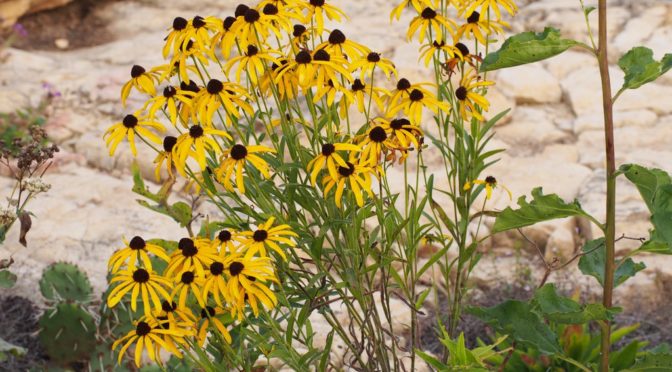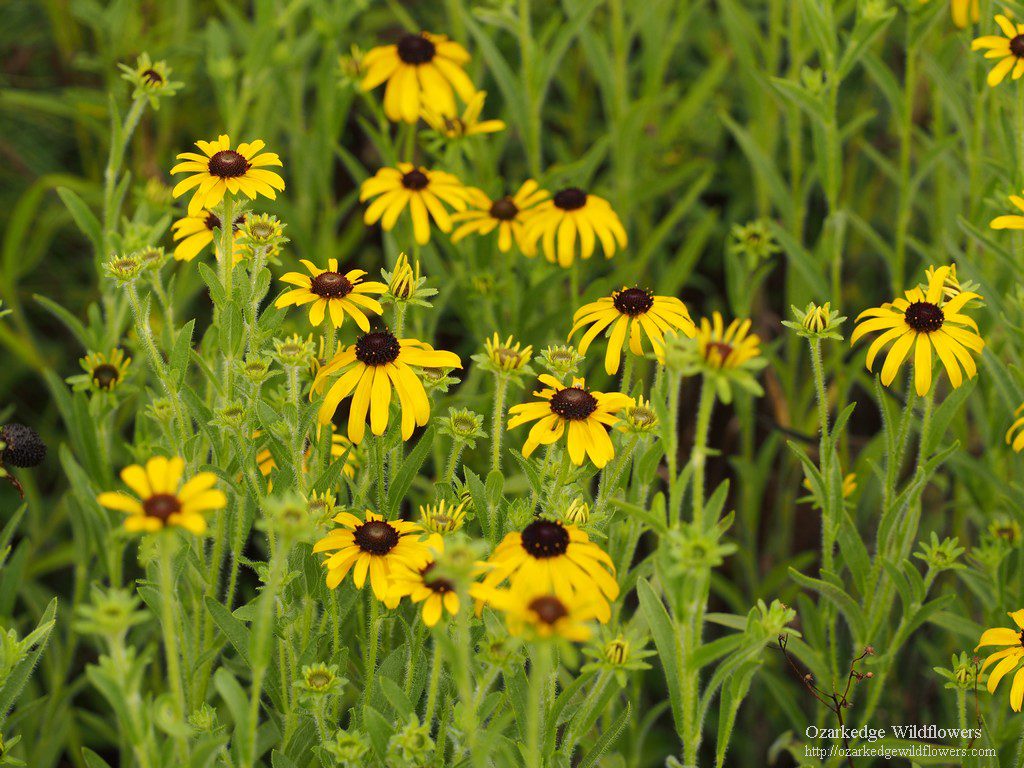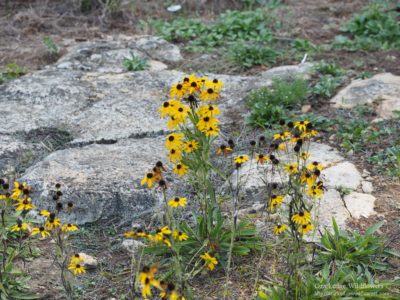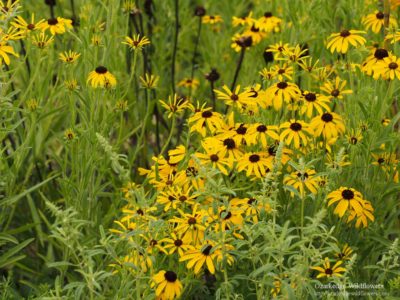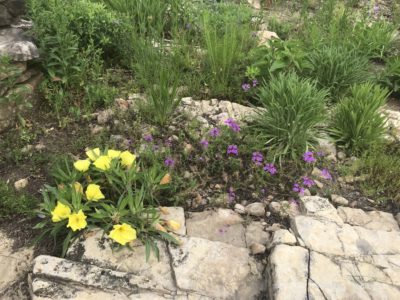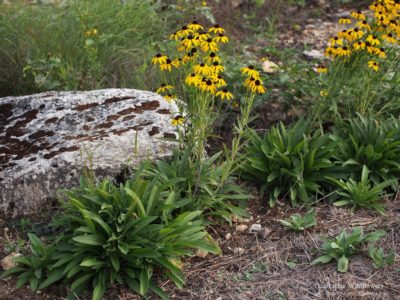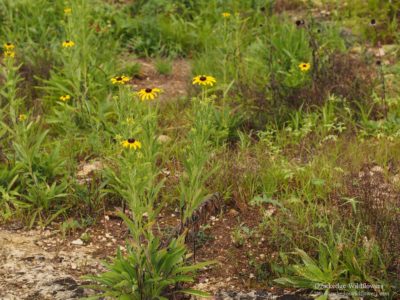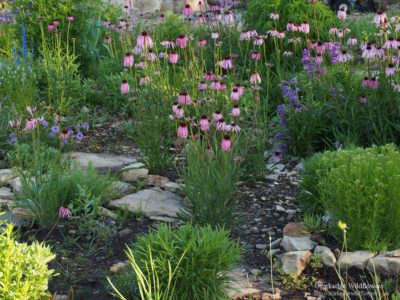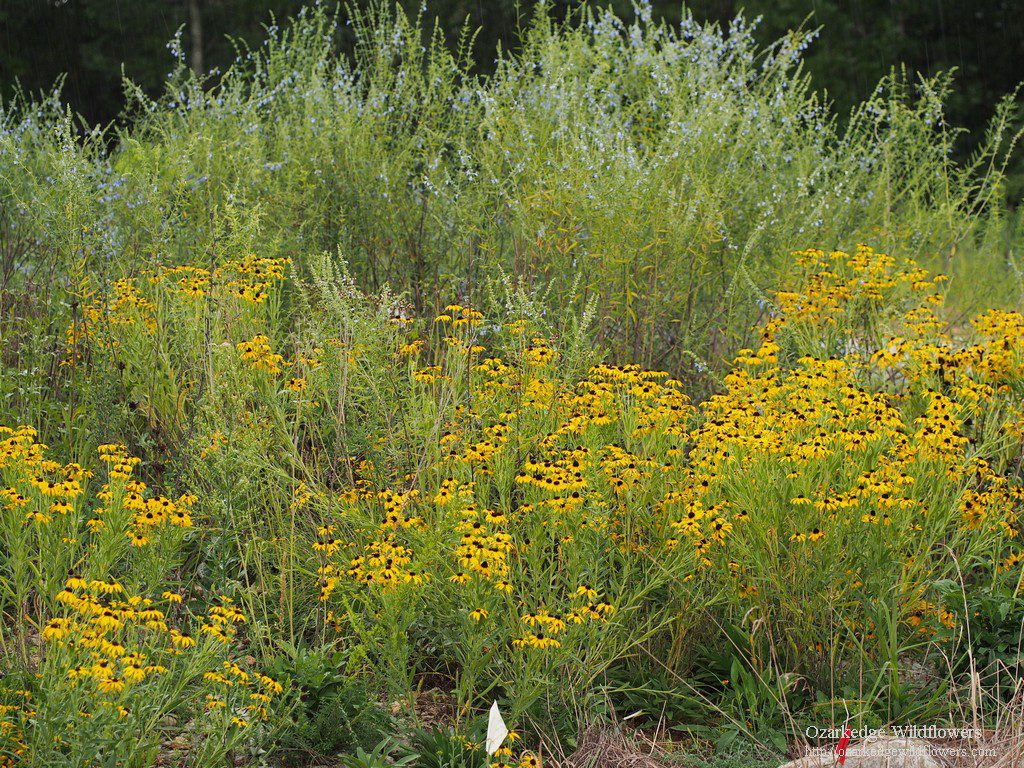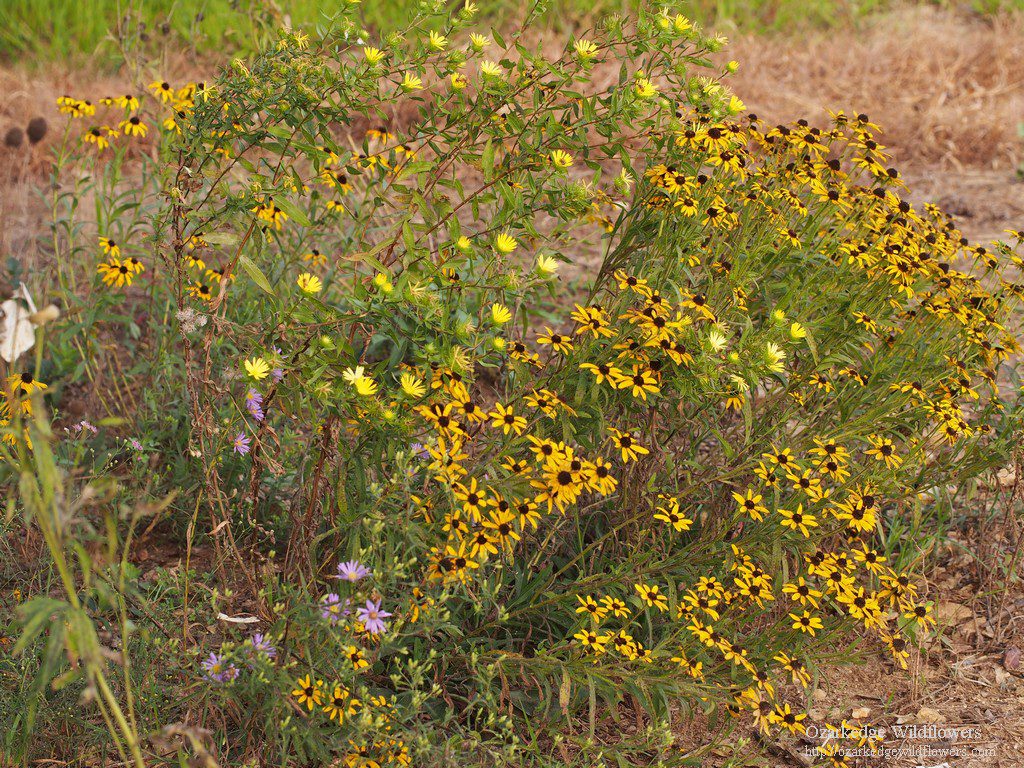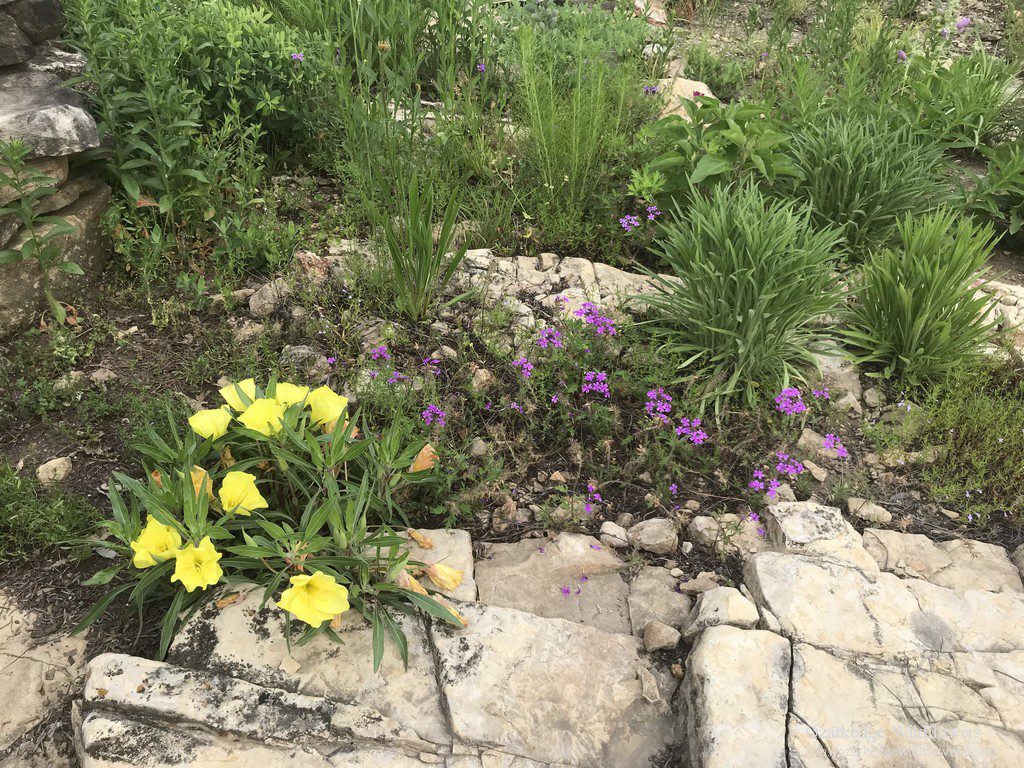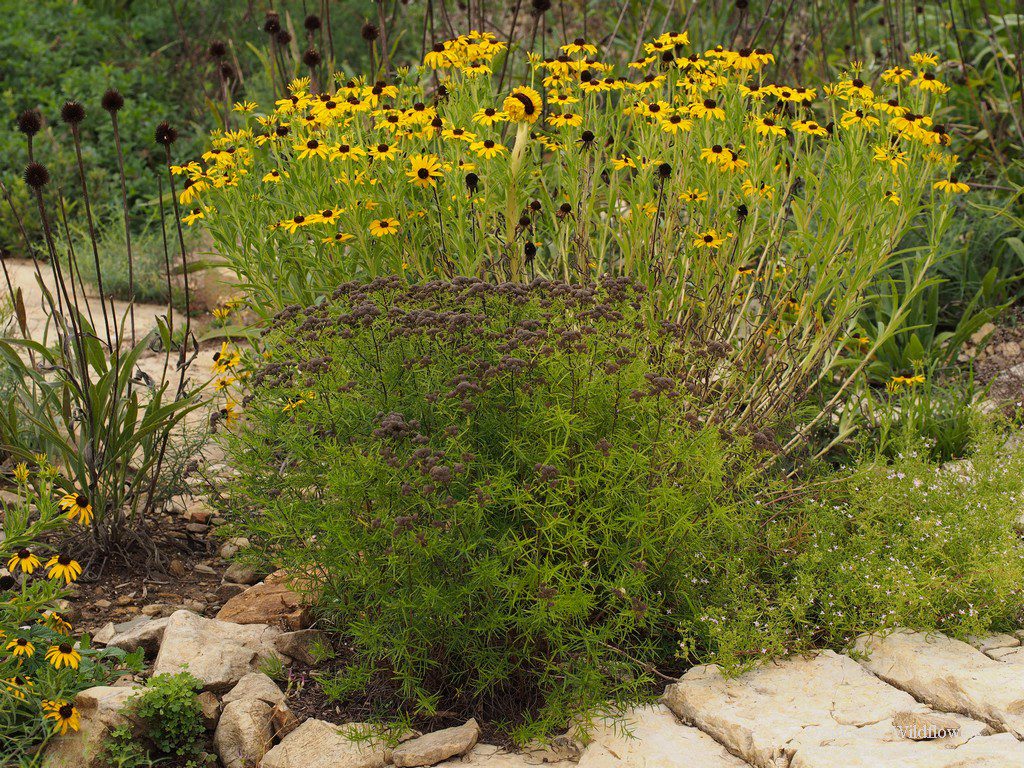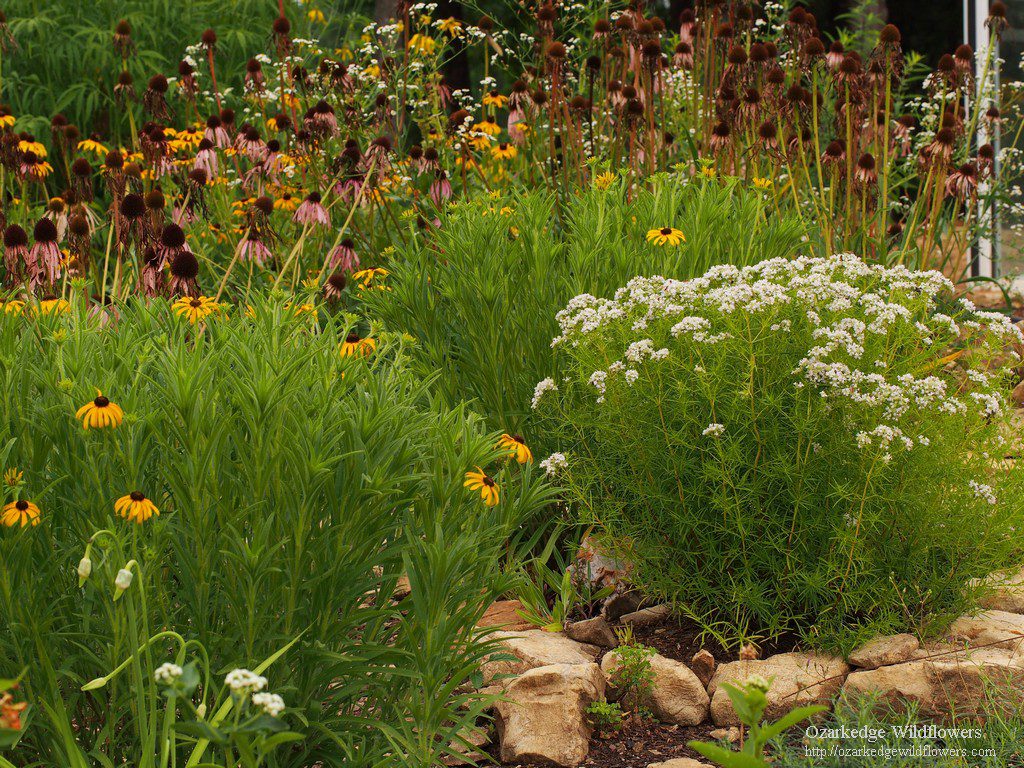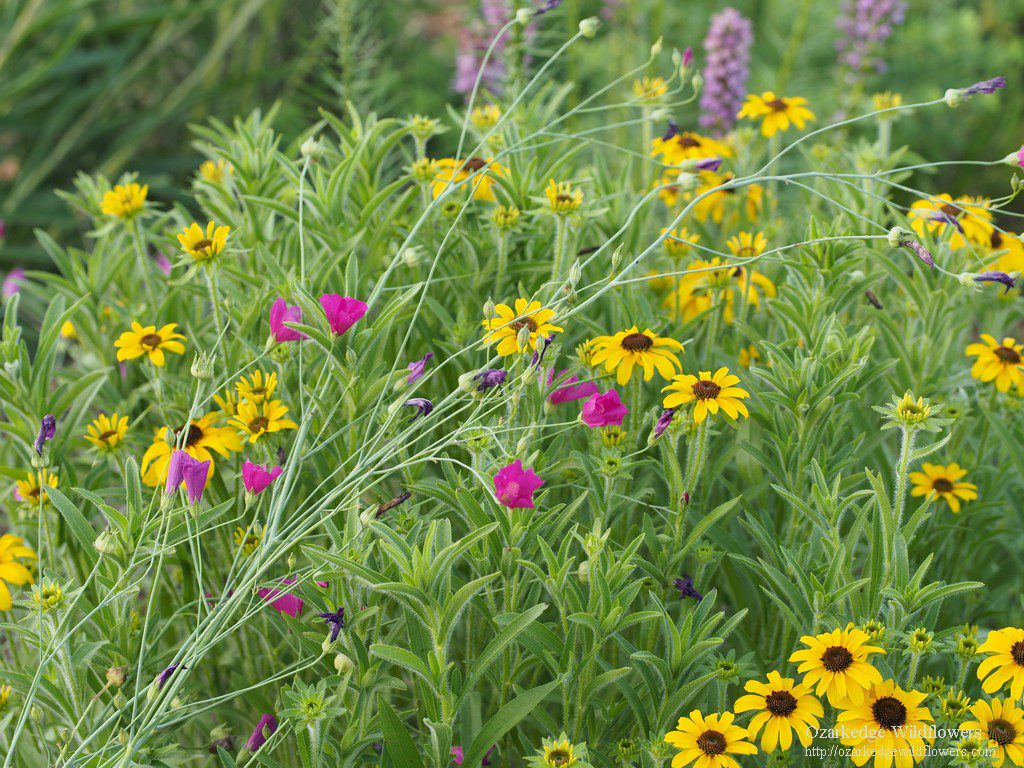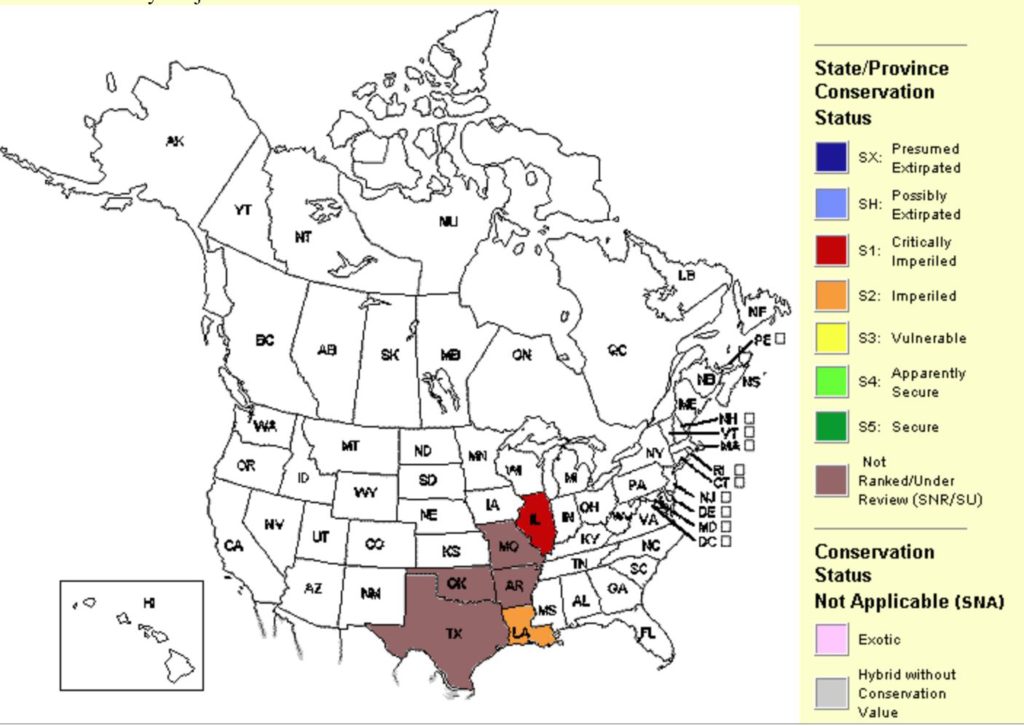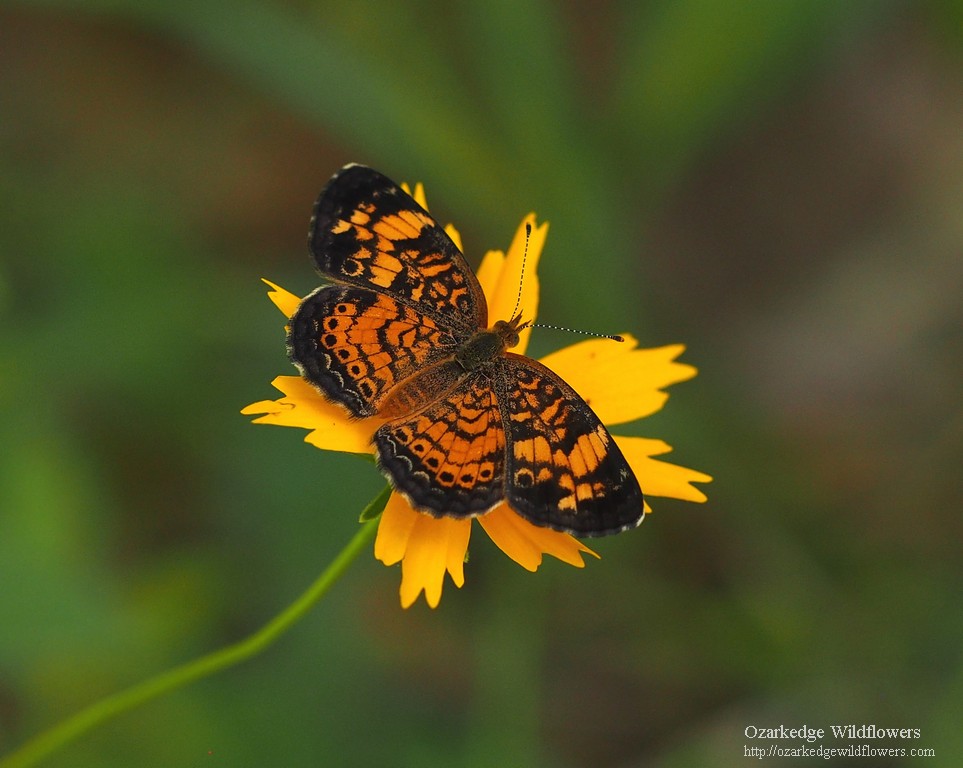This is another easy to grow black-eyed susan flower. But, it’s so much more than that. Rudbeckia missouriensis is one of the most characteristic plants of the Ozark Glades. These glades are home to some of our most beautiful wildflowers and support important wildlife. Glade habitats in North America are in trouble, but the good news is that there are projects to restore many of the glades that are left. You can get involved and help support this effort. Learn more about glades in the Habitat section below. In the meantime, read on about this amazing and beautiful native wildflower. You can grow it if you have a sunny spot in your yard and you’ll be rewarded year after year with a bounty of yellow-orange flowers that are covered with butterflies and bees.
Here are just a few of the beautiful plants you’ll find in the glades blooming alongside Rudbeckia missouriensis.
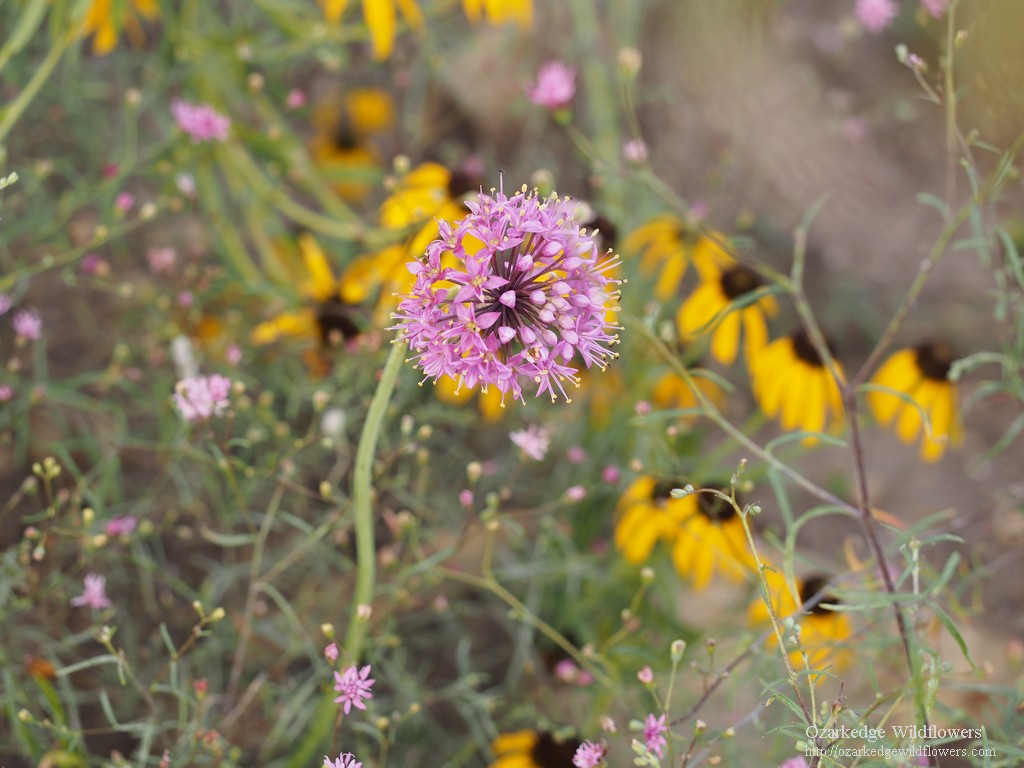
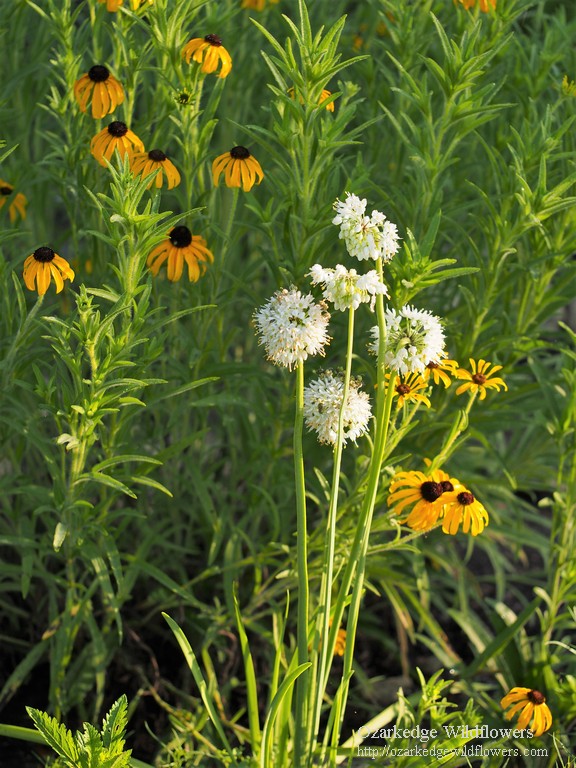
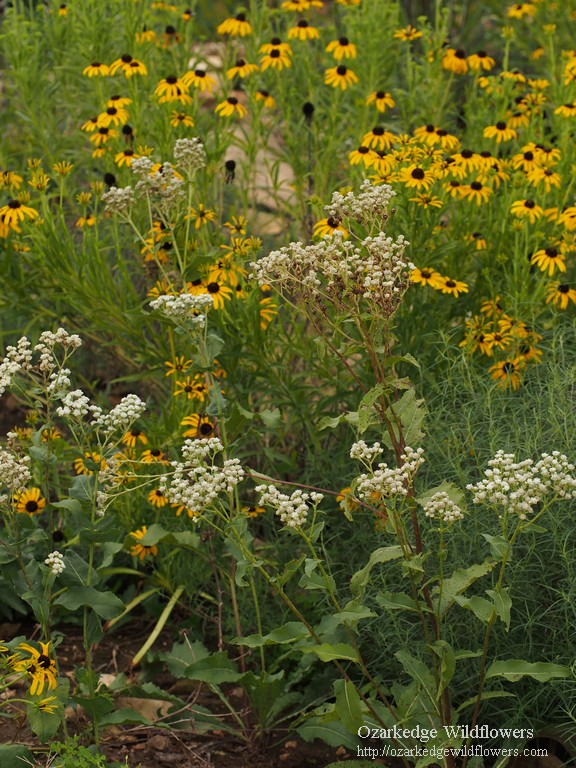 Parthenium integrifolium and Rudbeckia missouriensis
Parthenium integrifolium and Rudbeckia missouriensis
Latin Name/Common Name- Rudbeckia is a name used for coneflowers and black-eyed susans. According to Stearn’s Dictionary of Plant Names, the name is in honor of Olaf Rudbeck (1630- 1702). He was an anatomist, botanist and he founded the Uppsala botanic garden. His son, also named Olaf Rudbeck, was a professor in Uppsala and befriended Linnaeus. Hence, Rudbeckia is named for both father and son. Missouriensis refers to Missouri.
Common names include Missouri coneflower, Missouri orange coneflower and Missouri Black-eyed Susan.
Bloom Color- The ray flowers are yellow-orange and surround the dark brown disk florets.
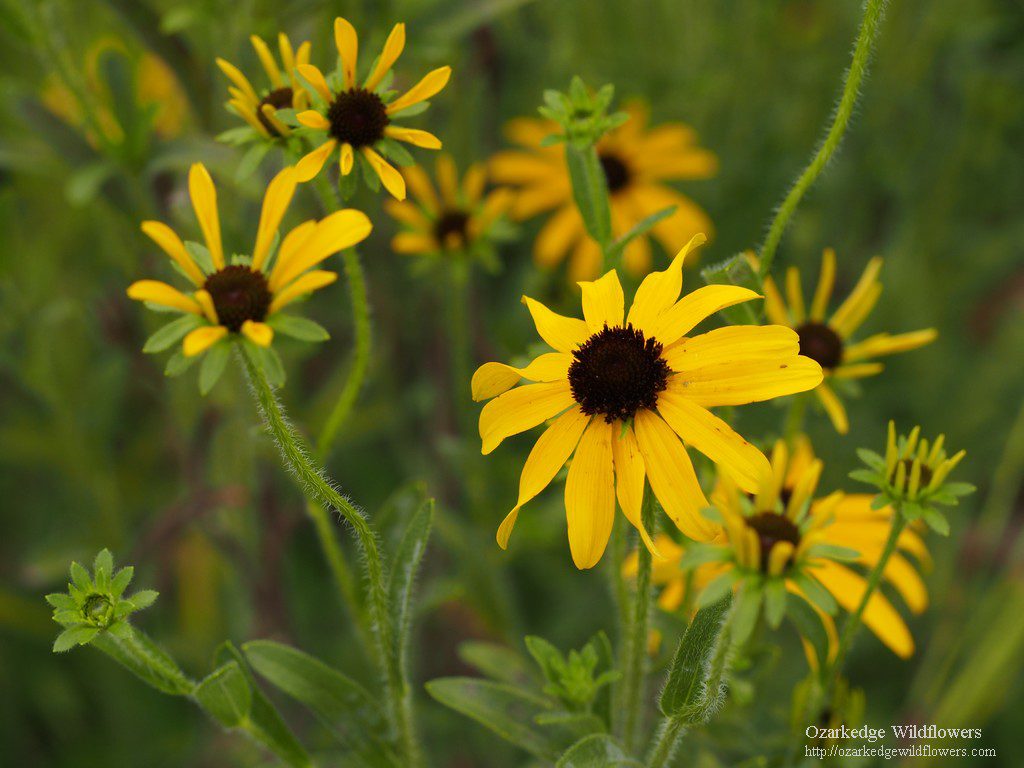 Yellow-orange flowers of Rudbeckia missouriensis
Yellow-orange flowers of Rudbeckia missouriensis
Description
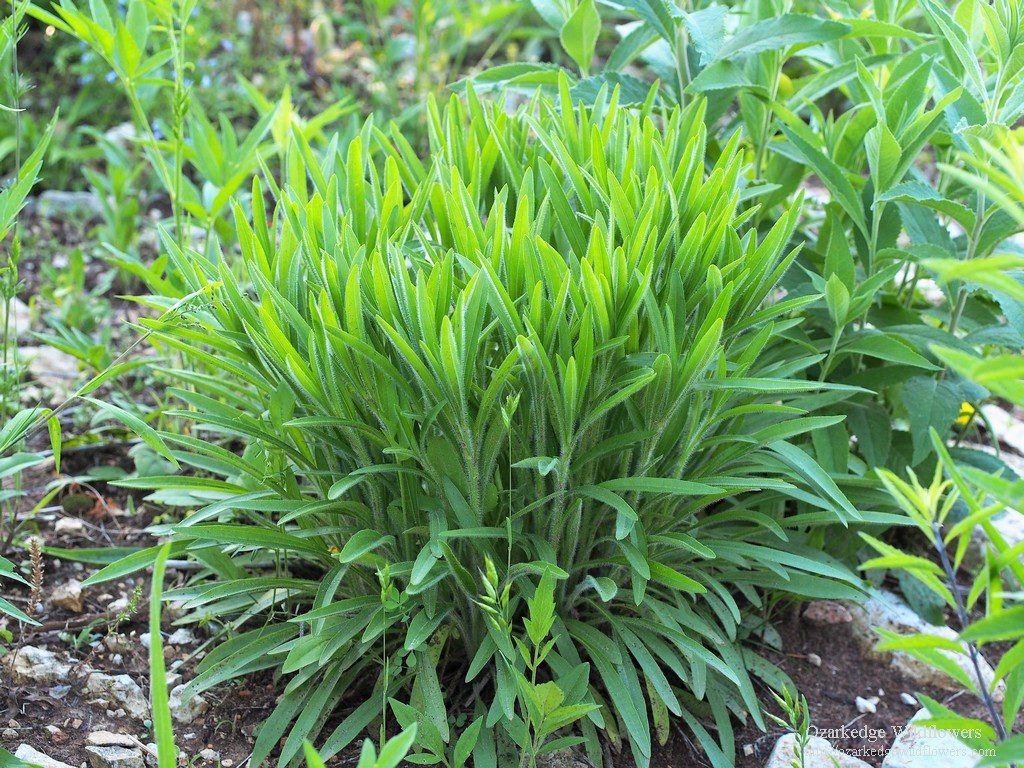
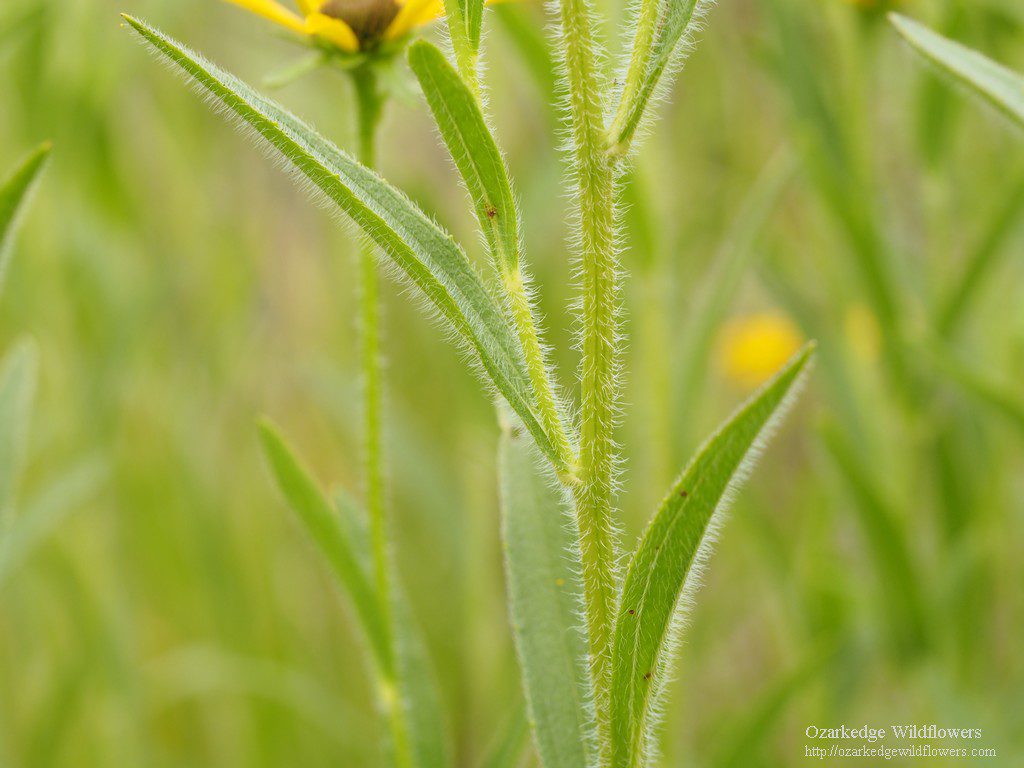
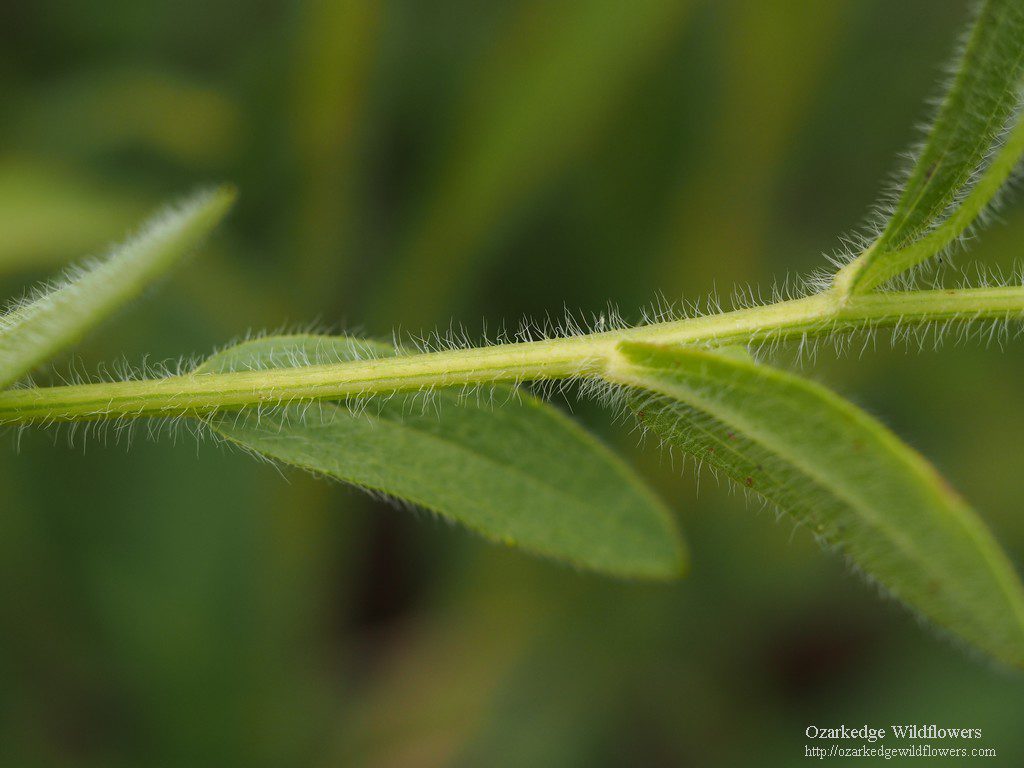
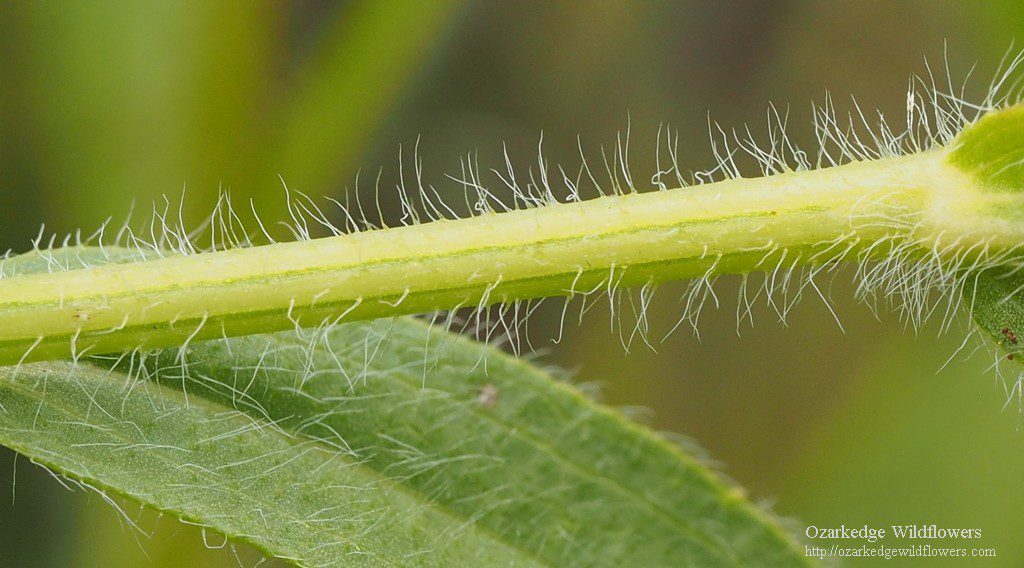
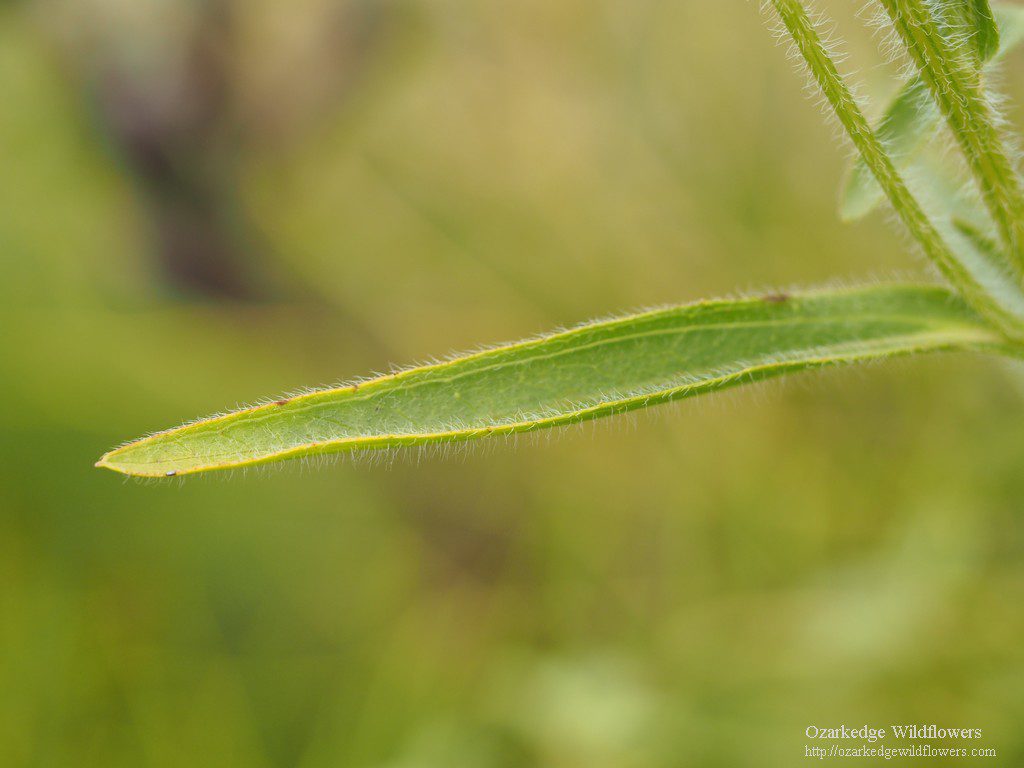
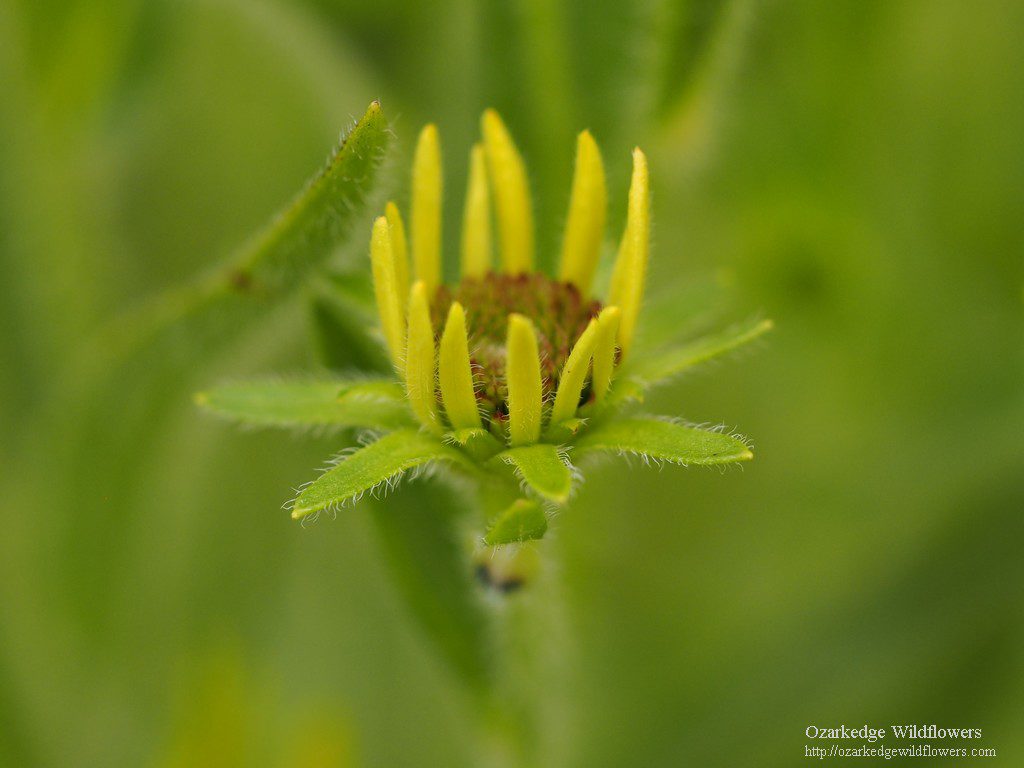
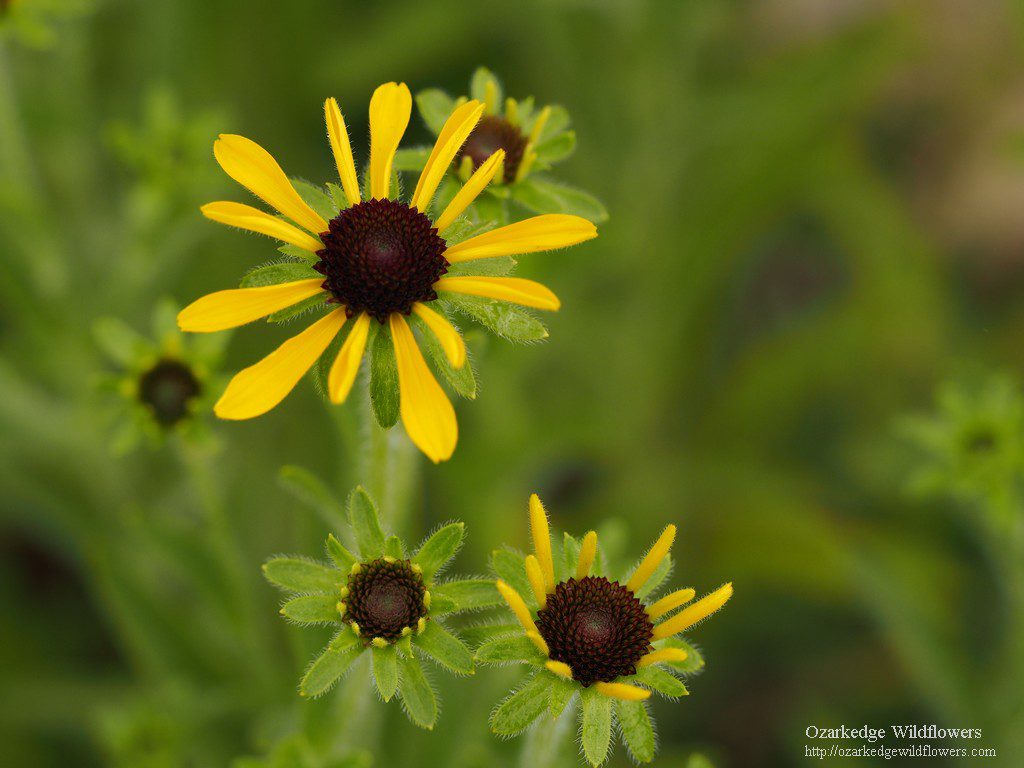
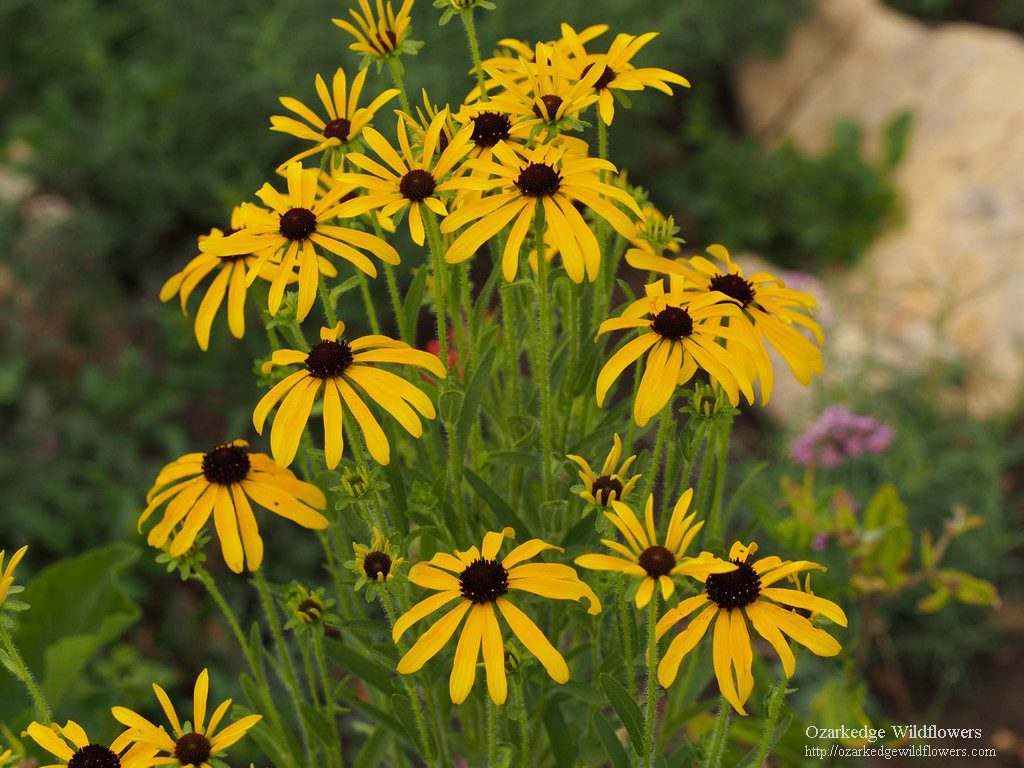
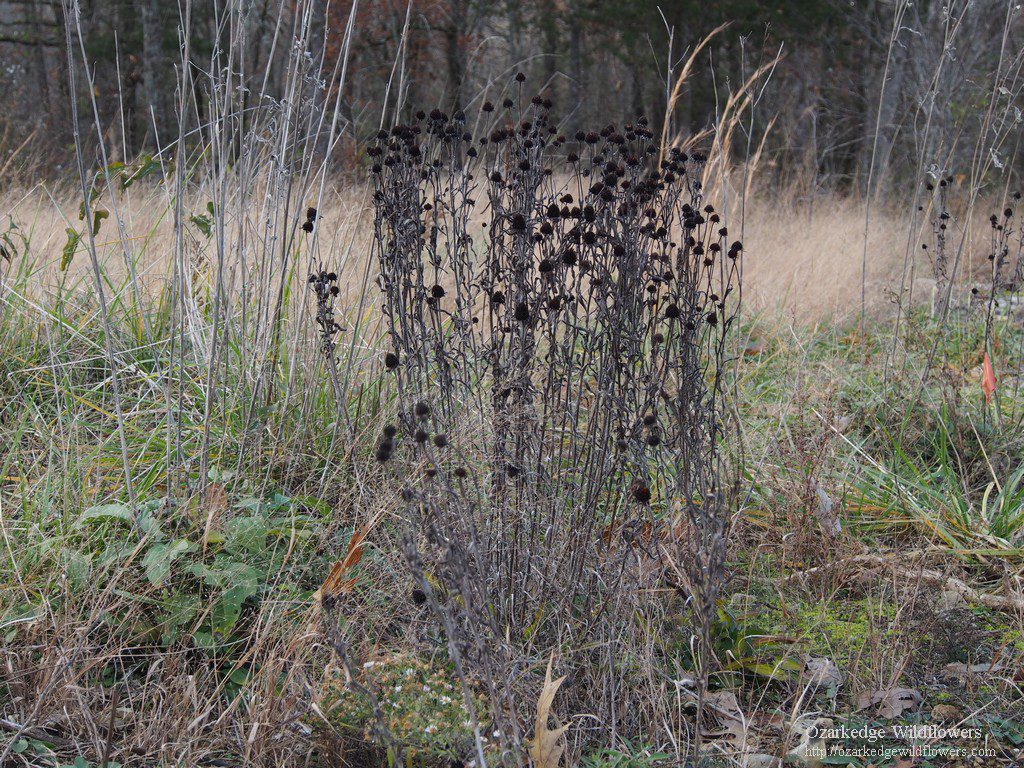
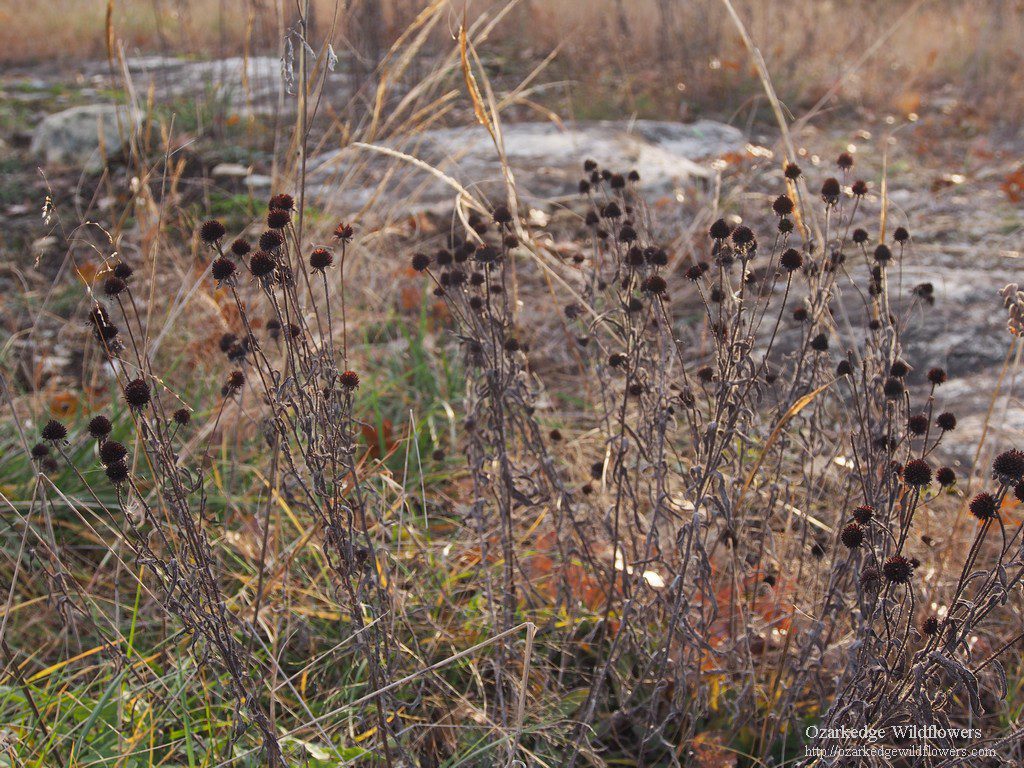

Bloom Time- Rudbeckia missouriensis is a long-blooming perennial. On Ozarkedge, as in most locations within its range, it blooms from June into October.
Habitat- Rudbeckia missouriensis is a dominant plant species of the limestone glades of Arkansas and Missouri. Our glades are some of the most beautiful places that can be experienced. The native flowering plants in glades will take your breath away and the exposed rocks add to the drama. Not only are glades beautiful, they are important habitats that conserve biodiversity of both plant and animal species. They provide home to many reptiles, birds, insects, snakes and mammals. Some of our most spectacular native plants are only found in glades.
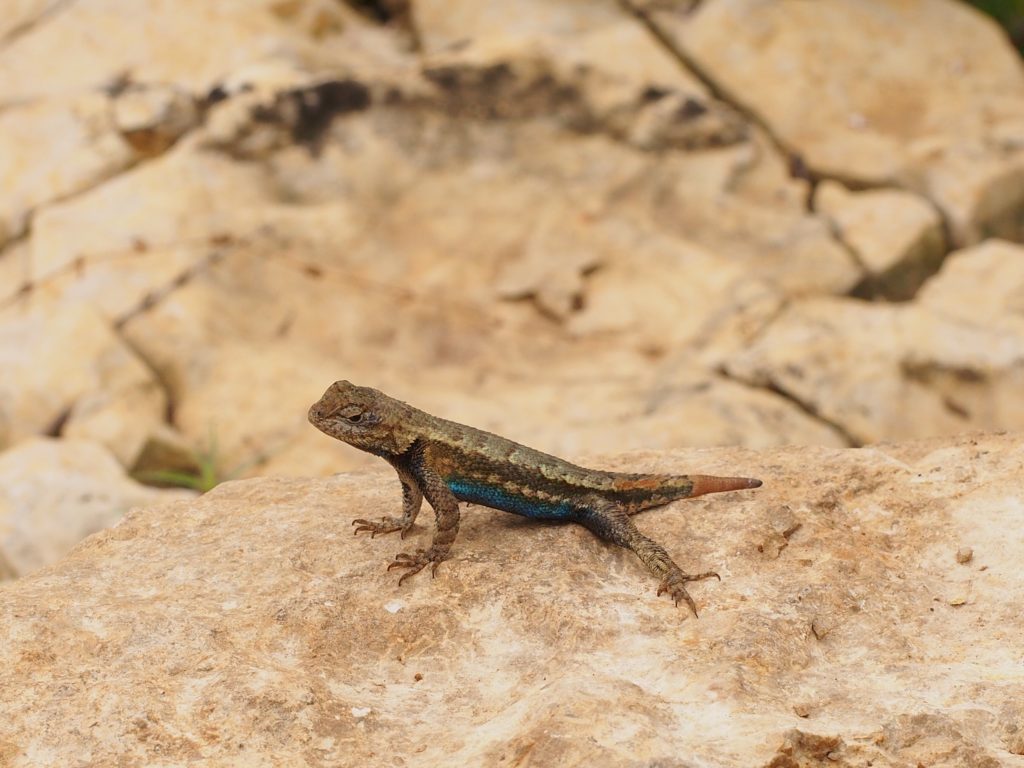
Many of our glades have disappeared and those remaining are under threat. These threats include quarrying, over-grazing, fire-suppression, invasion by exotic species, home development and even recreational activities such as ATVs, mountain biking, motocross racing, horseback riding and illegal root digging for herbal use and plant collecting.
Glades require fire to suppress woody vegetation. Without fire, they are quickly invaded by Eastern red cedar. Oaks and other hardwoods soon follow. Fortunately, some of our remaining glades can be restored through land management including prescribed burning, removal of invasive species and restriction of grazing and other activities that damage the thin soil structure.
Glades are very susceptible to damage from large mammals, human traffic and vehicles because the rocky soil is shallow and often steeply sloped. The exposed rock and sunny locations result in desert-like conditions during much of the summer. Hence, plants endemic to glades are drought tolerant and thrive in sunny conditions.
Pictures of glades in bloom on Ozarkedge
What’s Growing Nearby? There are many plants within the glade habitat. Below are pictures showcasing some that have a similar blooming period or are blooming a time when you could recognize the foliage of Rudbeckia missouriensis. Hover your mouse or tap each picture to see the plant name
Endangered List- Rudbeckia missouriensis is native to only 6 states- Illinois, Missouri, Arkansas, Louisiana, Oklahoma and Texas according to Natureserve. Within this limited range, it is reported as Imperiled in Lousiana and Critically Imperiled in Illinois. The status in the other 4 states remains Not Ranked/Under Review. Hence, it’s impossible to truly know the status of this beautiful native. There is a movement to restore and reclaim some of the Ozark Glades and this gives me hope for this and many other natives that truly only thrive in that habitat.
NatureServe. 2018. NatureServe Explorer: An online encyclopedia of life [web application]. Version 7.1. NatureServe, Arlington, Virginia. Available http://explorer.natureserve.org. (Accessed: January 12, 2019 ).
The USDA Plants Database lists it as Endangered in Illinois and doesn’t mention the status in Louisiana.
Interesting Tidbits- Missouri coneflower is easy to start from seed and, once established, it will gradually form colonies. Seeds can be purchased from numerous reputable sources and you can expect plants to bloom in the second year. It’s best to purchase seed collected as close as possible to where you live. Over multiple generations, plants tend to adapt to the local environment and you’ll usually have better success with locally sourced or collected seed.
A wide variety of insects visit Rudbeckia missouriensis for the nectar and pollen. This is well described at one of my favorite wildflower sites- llinois Wildflowers. There it mentions two species of bees who are specialist pollinators of this (and other Rudbeckia species). These are the Andrena rudbeckiae and Hetrosarus rudbeckiae.
This plant also supplies food for the caterpillars of the Silvery Checkerspot and Gorgone Checkerspot.
